POLLUTION OF AIR AND WATER for Class 8 SCIENCE
INTRODUCTION
Hamare chapter ka name hai “Pollution Of Air And Water”, toh iss chapter mein hum water pollution aur air pollution ke baare mein padhenge. Hum janege ki air pollution aur water pollution kya hota hai, air aur water kaise pollute hote hai, isko rokne ke liye kya karna chahiye, etc. Yaha par hum Taj Mahal ki case study bhi padhenge aur green house gases aur unke effect ke baare mein bhi janege. Fir hum janege ki water kaise pollute hota hai, isko kaise purify kiya jata hai, potable water kya hota hai aur isko kaise purify kiya jata hai.
Air Pollution
Air gases ka ek mixture hai. Air mein 78% nitrogen hai, 21% oxygen aur 1% other gases jaise carbon dioxide, argon, methane, etc. present hai. Air mein small quantity mein water vapours bhi present hote hai.
Jab air mein unwanted aur unnecessary substances mix hote hai aur iska living aur non-living things par harmful effect hota hai, isko air pollution kehte hai.
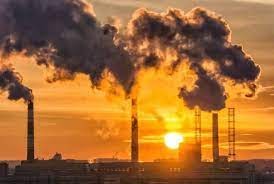
How Does Air Get Polluted?
Abhi hamne jana ki air pollution kya hota hai, ab hum janege ki air pollute kaise hoti hai?
Aise substances jo air ko contaminate karte hai unko air pollutants kehte hai. Eg- Smoke, dust, etc.
Air pollutants ke different sources hai, yeh natural sources jaise forest fire ya volcanic eruptions se nikalne wale smoke aur dust se ho sakta hai aur yeh human activities jaise automobile exhausts, burning of firewood, factories, etc. se bhi ho sakta hai.
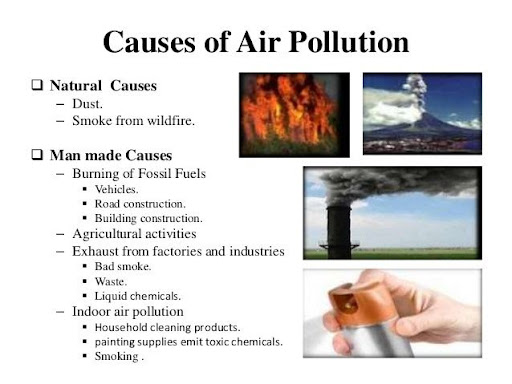
Air pollution hamari health aur environment dono ke liye hi bahut harmful hai. Iski wajah se bahut saari respiratory problems bhi hoti hai.
Polluted air mein different substances aur pollutants present hote hai. Eg- Polluted air mein carbon dioxide, carbon monoxide, nitrogen oxides, smoke, chlorofluorocarbons, etc. jaise pollutants present hote hai. Ab hum inme se kuchh pollutants ke baare mein padhenge ki yeh pollutants air mein kaise aate hai.
Carbon monoxide gas, kisi bhi fuels jaise petrol aur diesel, etc. ke incomplete combustion se produce hoti hai. Yeh ek poisonous gas hai jo blood mein oxygen carrying capacity ko reduce karti hai.
Smog, atmosphere mein ek fog-like thick layer hoti hai. Yeh smoke aur fog se mil kar bani hoti hai aur especially winters mein jyada hoti hai. Smoke mein nitrogen oxides present hote hai jo doosre pollutants aur fog ke saath mix ho kar smog form karte hai. Smog se breathing problems jaise asthma, cough, wheezing, etc. hota hai.
Sulphur dioxide aur nitrogen dioxide bhi air pollutants hai, yeh petroleum refineries, combustion of coal, etc. se produce hote hai. Yeh bhi respiratory problems cause karte hai, even yeh lungs ko bhi damage kar sakte hai.
Chlorofluorocarbons (CFCs) aise pollutants hai jo refrigerators, air conditioners, aerosol sprays, etc. se nikalte hai. Yeh hamare atmosphere ki protective layer ozone ko damage karte hai. Ozone hamein sun ki harmful radiations, ultraviolet rays se bachati hai. Hamari ozone layer mein already ek hole ho chuka hai aur yeh aur damage na ho isliye hum aaj-kal CFCs ki jagah chemicals use karte hai.
Inn sabhi pollutants ke alawa bhi air mein kuchh aur pollutants present hote hai, eg- automobiles jo diesel aur petrol burn karte hai woh smoke ke kuchh tiny particles produce karte hai jo long period of time ke liye air mein suspended rehte hai aur visibility reduce karte hai. Neeche table mein hum kuchh air pollutants ke name, sources aur unke effects dekh sakte hai.
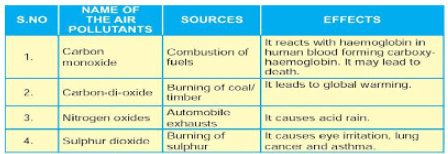
Case Study- The Taj Mahal
Air pollution hamare environment ko bahut severely affect karta hai, yeh sirf living beings ko hi nahi balki buildings, statues aur monuments, etc. ko bhi affect karta hai aur iske bahut bade aur live example “Taj mahal” ke baare mein hum sabhi ne suna hai jo ki India ka most famous aur beautiful tourist attraction hai lekin air pollutants ki wajah se iski beauty dull hoti ja rahi hai, kyonki air pollutants ki wajah se iska white marble discolor hota ja raha hai aur yellowish hota ja raha hai.

Causes of air pollution in Agra and its effects on The Taj Mahal
Greenhouse Effect
Sun rays earth ke atmosphere mein enter karti hai, inme se kuchh rays reflect ho kar wapas chali jati hai aur kuchh rays atmosphere mein trap ho jati hai. Yeh trapped radiations earth ko warm rakhti hai.
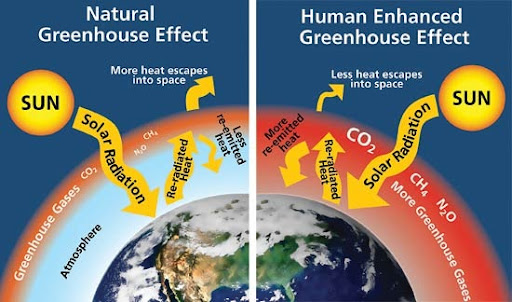
The greenhouse effect is the process by which radiation from a planet's atmosphere warms the planet's surface to a temperature above what it would be without this atmosphere.
Earth ke atmosphere mein kuchh aisi gases present hai jo heat ko trap karti hai. Eg- Carbon dioxide, methane, nitrous oxide, etc. Lekin aaj-kal human activities ki wajah se earth par Co2 increase hoti ja rahi hai jiski wajah se earth par heat jyada trap hone lagi hai. Inn greenhouse gases ke increase hone ki wajah se day by day earth ka temperature rise hota ja raha hai. Earth ke temperature ke rise hone ke iss phenomenon ko hum global warming kehte hai.
Greenhouse gases ke bina earth par life possible nahi hoti lekin ab inke excess ki wajah se greenhouse bahut jyada affect hota ja raha hai.
Human activities ki wajah se environment mein Co2 continuously release hoti rehti hai aur plants photosynthesis ki process perform karke isko utilise kar lete hai lekin aaj-kal deforestation ki wajah se air mein Co2 ka amount jyada hota ja raha hai jiski wajah se heat jyada trap hoti hai aur global warming badhti ja rahi hai. As a result glaciers bhi melt hona start ho gaye hai. Yeh hamare liye ek major concern ban gaya hai. Kuchh countries ne to greenhouse gases ke emission ko reduce karne ke liye agreements bhi banaye hai. Kyoto protocol issi ka ek example hai.
What can be done?
Switching to cleaner fuels like CNG and LPG can lead to decreased air pollution.
Generating awareness among people about air pollution and its harmful effects will encourage them to participate in preventing it.
Increasing the usage of solar energy, wind energy and hydropower.
Planting more and more trees around the cities in rural areas. India celebrates ‘Van Mahotsav’ in July every year where people come together and plant trees on a large scale.
Instead of burning dry leaves and other organic materials they should be dumped into compost.
Using gas stoves instead of burning coal or wood to cook food.
Sharing vehicles or using public transport to reduce the number of vehicles on the road and hence the air pollution.
Using eco-friendly paints and cleaning products for household and other buildings.
Water Pollution
Water, earth par life ke existence ke liye bahut necessary hai. Water ke bina hum earth par life ko imagine bhi nahi kar sakte. Yeh hamari day to day life activities ke liye bhi bahut important hai. Water drinking, washing, bathing, cooking, etc. ke liye bahut jaruri hai. Inn activities ki wajah se water mein bahut saare substances mix up ho jate hai jiski wajah se yeh pollute ho jata hai aur further consumption ke liye safe nahi rehta.

Water mein biological, chemical aur physical substances ke addition ko hi water pollution kehte hai.
Jin substances ke addition ki wajah se water consumption ke liye unfit ho jata hai unko hum water pollutants kehte hai.
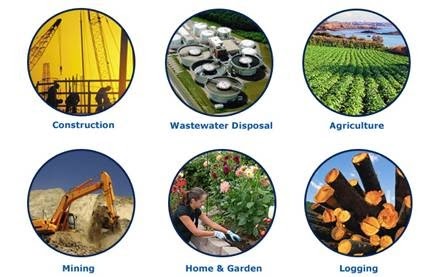
How does water get polluted?
Ab hum janege ki water pollute kaise hota hai. Iske liye hum ganga river ki case study karenge.
Case study
Ganga India ki most famous rivers mein se ek hai. Yeh northern, eastern aur central India ke bahut saare cities aur villages mein se flow karti hai. Inn regions mein rehne wale log apne livelihood aur daily needs ke liye Ganga river par hi depend karte hai. Lekin World Wide Fund (WWF) ke according yeh bhi paya gaya hai ki ganga world ki ten endangered rivers mein se ek hai kyonki yeh extremely polluted hai. Aisa isliye hai kyonki jin villages, towns, etc. mein yeh flow karti hai waha par untreated sewage, garbage, dead bodies ke ashes, etc. sab isme throw kar diye jaate hai.Kafi jagah par to iss river ko dead bhi kaha jata hai kyonki pollution ki wajah se waha isme koi aquatic life present nahi hai.
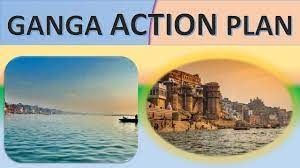
Iss river ko save karne ke liye 1985 mein Ganga Action Plan launch kiya gaya. Iss plan ka aim river ke pollution levels ko kum karna tha lekin increasing population aur industrialisation ki wajah se yeh river itni polluted ho chuki hai ki iss plann ke according iska repair possible nahi hai. Isliye government ne ab 2016 mein ek naya initiative liya hai aur ek new plan, National Mission For Clean Ganga (NMCG) launch kiya hai.
Hum niche table mein water pollution ke kuchh sources aur unke effects ke baare mein janege.
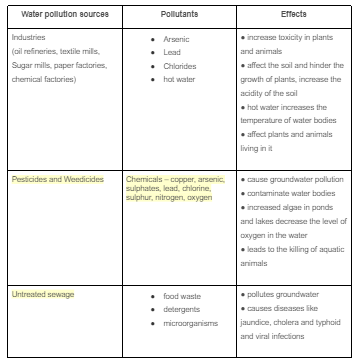
What is eutrophication?
Jab bhi water mein, especially stagnant water mein excess amount mein nutrients present ho toh usko Eutrophication kehte hai.Yeh mainly water bodies mein chemicals ke addition ki wajah se hota hai, jiski wajah se large number of algae and plants water mein grow karna start kar dete hai. Jab yeh plants dead ho jate hai toh water mein decomposers rise karne lagte hai jo ki water ki mostly oxygen ko utilise kar lete hai. Yeh water ki mostly oxygen use kar lete hai isliye aquatic animals ko lack of oxygen ho jata hai aur woh dead hona start kar dete hai aur water pollute hota rehta hai.
Sometimes untreated sewage ko bhi water bodies mein directly throw kar diya jata hai jisse water contaminate ho jata hai. Contaminated water ki wajah se cholera, jaundice aur typhoid jaisi diseases hoti hai.
Agar water mein woh bacteria present hai jo mammals ke faeces mein present hota hai toh iska matlab woh water contaminated hai aur hamein aise water ko use nahi karna chahiye. Isse hamein bahut infections aur diseases cause ho sakti hai.
What is Potable Water and How is Water Purified?
Drinking water or the water that is fit for consumption and food preparation is also called Potable water.
How is water purified?
How water is made safe for drinking?
Water ko drinking ke liye safe banane ke liye hum kuchh methods padhenge.How to prevent water pollution?
Industries should strictly follow to the laws and do not dispose untreated sewage water into the rivers or any other water body directly.More water treatment plants should be established near the industrial areas.
We should save water as much as we can, for example, we can make sure that there are no leaking taps in the houses.
We should reuse water if we can, for example, the water that we use for washing clothes can also be used for cleaning the house floors.

POINT 1
Air Pollution: When the air is contaminated by unwanted substances which have a harmful effect on both the living and non-living components, it is referred to as air pollution.
Chemical Contamination: Discharge of harmful chemicals into rivers and streams causing pollution of water is called chemical contamination.
Global Warming: The average temperature of the Earth’s atmosphere is gradually increasing due to increasing levels of greenhouse gases like CO2. This is called global warming.
Green House Effect: The trapping of radiations by the Earth’s atmosphere due to increasing levels of gases like CO2 is called the greenhouse effect.
Pollutants: Pollutants are the substances which cause pollution.
Potable Water: Water which is purified and fit for drinking is known as potable water.
Water Pollution: Water-pollution is the contamination of water by those substances which are harmful to life.
SUMMARY
1. Air pollution is the contamination of air by impurities which may have a harmful impact on the living organisms and the non-living components.
2. Pollutants are the substances which contaminate air and water.
3. Carbon monoxide, nitrogen oxides, carbon dioxide, methane and sulphur dioxide are the major pollutants of air.
4. Increasing levels of greenhouse gases like CO2 are leading to global warming.
5. Water pollution is the contamination of water by substances harmful to life.
6. Sewage, agricultural chemicals and industrial waste are some of the major contaminants of water.
7. Water which is purified and fit for drinking is known as potable water.
8. Water is a precious natural resource. We must learn to conserve it.